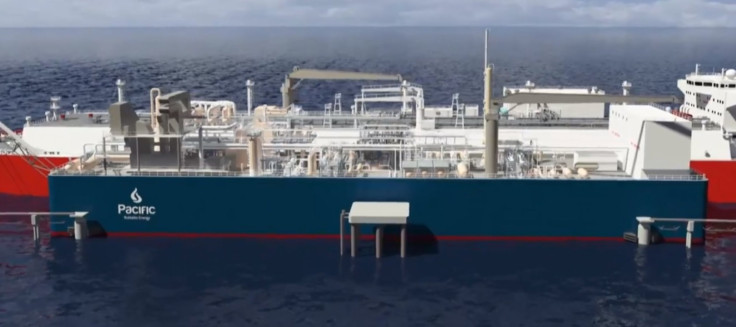Construction Of World's First Floating LNG Export Storage Facility Reaches Milestone: Completion Seen In 2015
A project to bring a floating liquefied natural gas (LNG) facility -- the world's first -- to the Caribbean region has reached a milestone, the company building the floating project announced.
Wison Offshore & Marine Ltd., which is building the Caribbean floating LNG export facility, said Thursday it installed three LNG storage tanks into the hull of the first non-propelled barge, which is being built in China.
The LNG barge, when completed, will be towed to the coast of Columbia where it will liquefy natural gas coming from pipelines onshore. The floating facility will serve as an alternative source of fuel for Caribbean costumers. The project is expected to be operational in the first quarter of 2015.

“Thanks to the efforts of Wison Offshore & Marine's integrated Chinese and Western team, we have successfully completed the installation of these LNG storage tanks on track for another on time delivery,” Dwayne Breaux, executive vice president of Wison Offshore & Marine, said.
A floating LNG facility is seen as an efficient way to export the energy resource compared with an onshore export facility. The floating LNG facility has the advantage of easily liquefying, storing and transferring LNG to tankers out at sea, which helps to move LNG quickly out to the market.
A video describes the project in detail below
Today several countries are developing plans to export LNG and the U.S. is looking to do so through onshore facilities.
In the past two years, four onshore LNG export projects have been approved by the Department of Energy. The most recent decision was made in September, when Dominion Resources Inc. (NYSE:D) received approval for the Cove Point terminal on the Maryland shore of Chesapeake Bay.
To date, the DOE has authorized 6.37 billion cubic feet of LNG from the plant to be sold overseas. However, the debate within the U.S. administration on how much natural gas should be exported without raising natural gas prices and reducing supplies in the U.S., has delayed the approval process.
In order to transfer natural gas on tankers, the energy resource needs to be liquefied as its lighter in a liquid form. Natural gas transported through pipeline can only reach certain destinations while LNG can reach the global market.
© Copyright IBTimes 2024. All rights reserved.












